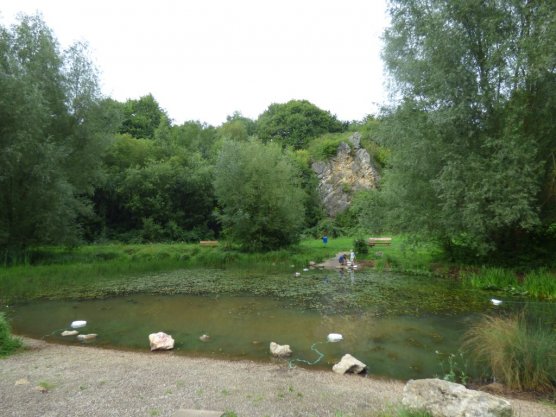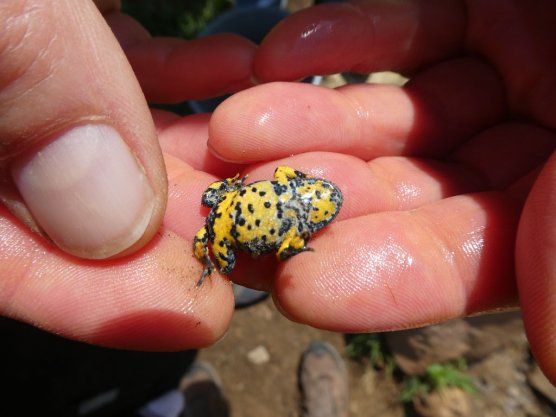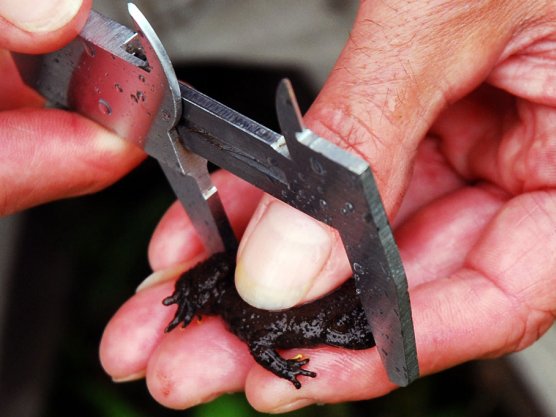
A conservation project for rare toads in the StädteRegion Aachen

Success monitoring
Monitoring for all three target species
Counting, measuring, documenting, observing and evaluating – monitoring involves collecting data, for example, on the number of individuals of a species in a certain area over a longer period of time. Evaluation of the data provides information about how the population of this species has developed over a certain time period.
Monitoring allows for actions that have been undertaken within the framework of the project to be checked and corrected, if necessary, already during the project phase. At the beginning of the project, preliminary investigations are carried out in areas where sufficient data is not available. Surveys are performed again at certain intervals and at the end of the project.
Surveys of individuals of a species in an area can take place in different ways: egg strings (natterjack toad) and egg clutches (yellow-bellied toad) can be counted. Tadpoles can be recorded by using fish traps, but also counted during the daytime (natterjack toad) or at night (common midwife toad). During the spawning season, adult animals can be quasi-quantitatively “examined” by their call. Observations are also documented. Areas are systematically surveyed on foot and known daytime hiding places are checked.
Yellow-bellied toad monitoring
As far as possible, monitoring should determine where and how many animals of which species occur. In the case of the yellow-bellied toad, this can be assessed by a capture-recapture study. Photos are taken of the underside of yellow-bellied toads to record them individually. The evaluation over a number of years also shows if, and how many, animals migrate to areas in which new bodies of water were created.
Species present – yes or no?
In a qualitative survey of natterjack toads and common midwife toads, bodies of water and their surroundings are searched for larvae and adult animals once a year, if possible. Callers are also registered.
How does a population develop?
To obtain information on the development of populations, selected areas are surveyed semi-quantitatively before and after measures have been implemented. The surveys take place a certain number of times per season by means of “examining” callings, observing, and sometimes using fish traps. Together with an assessment of the habitat and the detection of impairments to the species in the area, the so-called conservation status can then be determined.
You can also help
If you find or hear a yellow-bellied toad, a natterjack toad or a common midwife toad or spot larvae in a body of water, we would be happy if you let us know about your find.
 Larvae can be caught, identified and counted using bucket or bottle traps.© Biologische Station StädteRegion Aachen e.V.
Larvae can be caught, identified and counted using bucket or bottle traps.© Biologische Station StädteRegion Aachen e.V.



